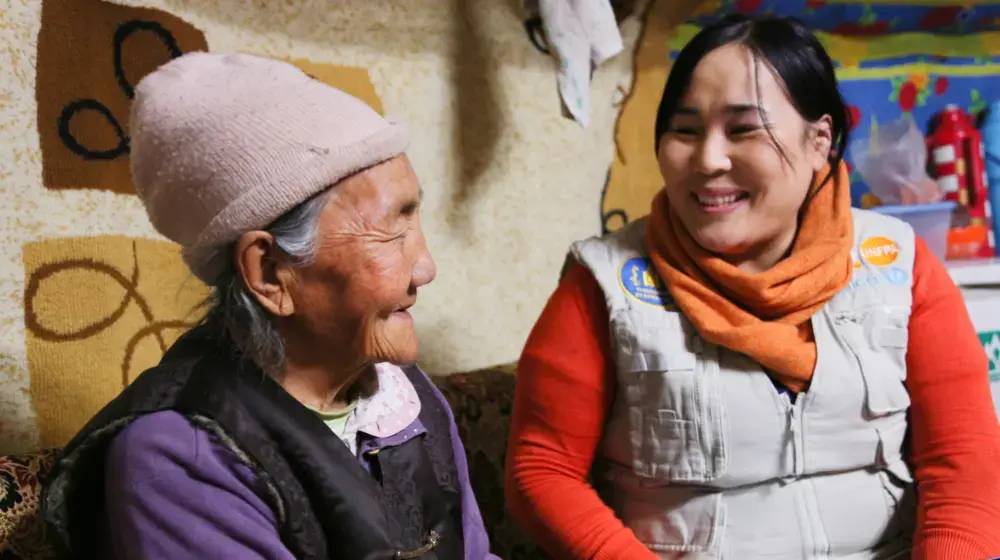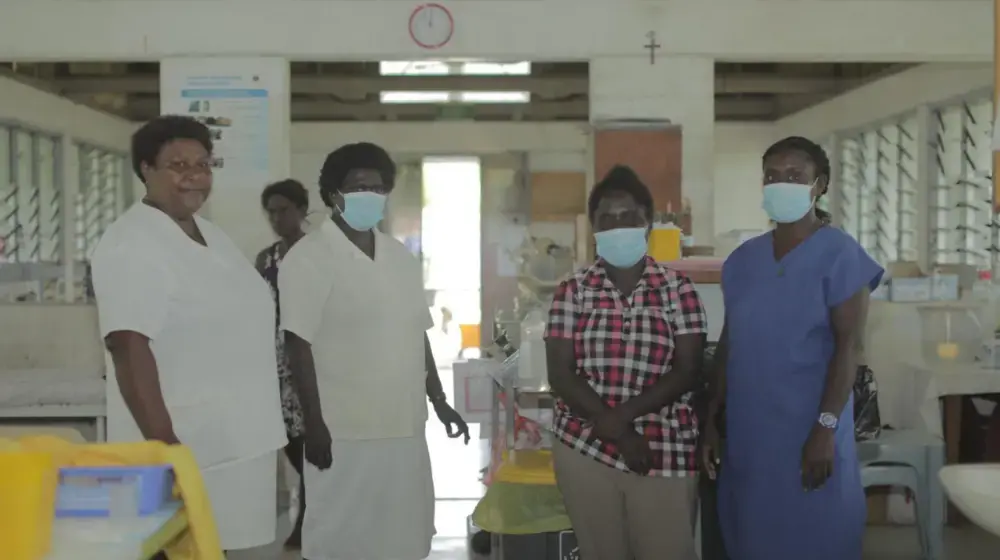By Kelli Rogers, Devex 6 May, 2020 | Original story here
MISSOULA, Mont. — As the COVID-19 pandemic rages on, organizations are racing to measure the rate of violence against women, which is projected to rise around the world due to lockdown orders.
The interest in understanding how the coronavirus crisis is impacting women’s well-being is welcome, data experts tell Devex. But now is not the time to interview women in their homes, they warn.
“We cannot prioritize data over women’s safety,” said Henriette Jansen, technical adviser for violence-against-women data and research for the United Nations Population Fund.
Measuring violence is a sensitive endeavor under any circumstance. Jansen has spent her career establishing the gold standard for collecting data on gender-based violence: Women enumerators, trained for weeks, conduct face-to-face interviews; they survey only one woman per household in a safe, private space; and they are ready to refer women to available health or legal services.
These standards are unachievable now. Social distancing limits the ability of researchers to travel, and women likely cannot be interviewed privately and confidentially, especially if they are isolated inside their homes with their abusers. Access to essential services is limited or is being administered online rather than in person.
Trying to collect data during the pandemic could also skew it if women are not interviewed alone, according to Jansen. “She may not share her experience with violence, and the rates that you would get would hugely underestimate the problem, and your data would give you a false impression of women’s reality,” she said.
UNFPA has been fielding a barrage of requests for technical support from groups interested in measuring current rates — particularly from organizations that have never done so and lack relevant expertise. To protect women, experts within several U.N. agencies are warning against this.
Still, data is a crucial tool for understanding how and why COVID-19 may result in an increase in violence and how to respond, so U.N. agencies are instead urging the use of existing data, while stressing ethical and safety principles.
A surge of violence tests data literacy
As population-based surveys take a back seat, the stressors that heighten violence against women — such as health and financial tensions in the home — are exploding due to COVID-19 confinement.
“We are very worried about a surge of violence against women,” said Anna Mecagni, senior director of programs at Women for Women International, which equips women survivors of war in countries such as Afghanistan and South Sudan with skills and support to rebuild their lives.
The nonprofit humanitarian organization does not conduct surveys on the prevalence of gender-based violence, but staff members usually learn of violence as women participate in programs and become comfortable sharing their experiences. The organization is staying in touch with the women it serves, but COVID-19 has disrupted face-to-face interactions, which served as opportunities for staff to refer women to any legal, health, or other services they might need.
In Nigeria, the nonprofit’s country team has recently been informed of several cases of violence. One woman asked her husband for financial support to solve a problem and received a beating, while another woman was beaten by her husband after asking him why he sold the goat she bought with her cash transfer from Women for Women International.
“We are also assuming that more women, beyond these who are reporting, are facing violence at home due to the lockdown but are afraid to report it. These cases have very recently come to our attention, and we are bracing for more,” Mecagni said.
“We cannot prioritize data over women’s safety.” — Henriette Jansen, technical adviser for violence-against-women data and research, United Nations Population Fund
Some reports indicate that calls to domestic violence hotlines, police, and shelters are increasing during the outbreak. In February, one help line in Singapore registered a 33% increase in calls compared with the amount received during that month last year. In Kosovo, the Ministry of Justice reported a 17% jump in cases of gender-based violence in March, compared with the same period in 2019, according to UNFPA.
In other countries, reporting, calls, and service use are decreasing as women find themselves unable to leave the house or fearful of being overheard on the phone by an abusive partner. This discrepancy is why interpreting service data is so difficult and why it cannot serve as a proxy for prevalence, said Juncal Plazaola Castano, a policy specialist on violence-against-women data for UN Women.
The national hotline in Argentina, for example, is receiving an overwhelming number of requests for support via WhatsApp — data that Castano’s UN Women colleagues in the Argentina country office are working to compile and analyze to inform a response.
But many people are also calling help lines for issues unrelated to violence — such as in regard to livelihood or food security concerns. And Castano said some women may be in such a desperate situation that they call the national hotline together with the provincial health line and municipal hotline.
“It may be the same woman doing five calls in a desperate moment — five calls to five different services. And are you counting that as five different cases?” Castano said.
New opportunities
As the virus spreads in countries with weak institutions, less information and data will be available. U.N. agencies have been working together to provide groups eager to measure gender-based violence with alternative ideas to understand COVID-related violence in these contexts.
“We are in this situation that is complicated because if we don’t give an option, some people will go ahead anyway. But this is an evolving field, and we don’t have ready-made answers,” Jansen said.
There are some methods experts advise against, such as adding questions about violence to socioeconomic assessments. Other tools — web-based platforms or surveys conducted by telephone, for example — pose unique risks and ethical concerns and could easily put women in danger.
Several countries have halted progress on prevalence surveys following the coronavirus crisis, including Myanmar, where interviewers were scheduled for training just as COVID-19 became a pandemic. Jansen sees this delay as an opportunity to change the country’s questionnaire.
“We will try to get a small set of questions included to the standard questionnaire to measure after the pandemic whether there was an impact of COVID-19 on the prevalence of violence,” she said.
But costly prevalence surveys are not the only way to gain an understanding of women’s realities right now, and the pandemic could spur researchers to strengthen other methods and be more adaptable in the future, GBV experts told Devex.
Having a better understanding of what groups want to collect data for can help steer efforts in a safer direction, Castano said. “The first question that we always ask is: ‘Why do you need to collect these data?’ — meaning, try to put in balance what you gain collecting the data versus ... the risks that you may be putting on women that you are interviewing,” she said.
If an organization’s purpose is to advocate for the need to intervene in cases of violence, for example, the first tip would be that there may be existing data that can help, Castano said. Many countries have data on the proportion of women who have experienced violence from previous prevalence surveys or demographic health surveys. Globally, 243 million women and girls aged 15-49 have experienced sexual or physical violence perpetrated by an intimate partner in the previous 12 months.
In the meantime, setting up key informant interviews with service providers and front-line workers can provide insight, as can rapid assessments of services to understand what is working and why or to see whether there are safe options for women to report violence. And administrative data can provide detailed information on how police, judicial, health, and social services respond to gender-based violence.
“Maybe this is the time as well to rethink together how to strengthen administrative records from those providing services,” Castano said.
What Castano is not doing is discouraging groups from collecting or using data at all.
“I don't think the message is: ‘Do not collect data.’ ... It’s maybe that understanding the prevalence is not what we need now. Maybe we need to understand the cases reported, the difficulties of women seeking help. So I think it's just shifting the methods and the sources,” she said.




